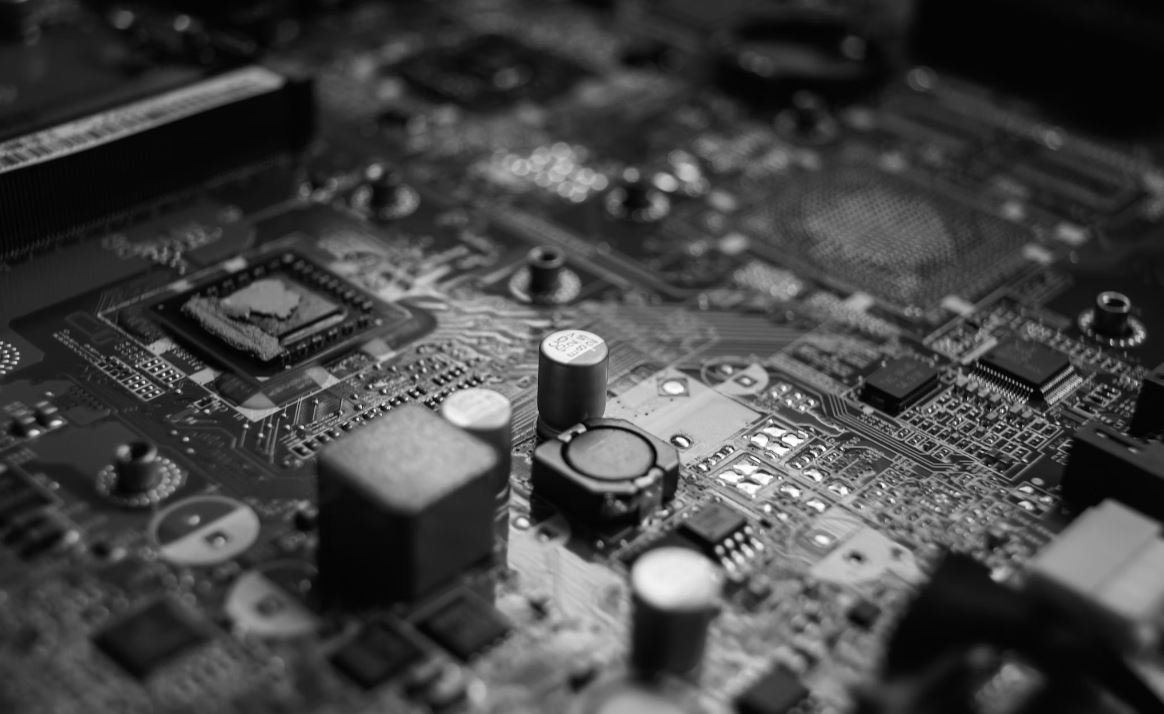How AI Is Used in Manufacturing
Artificial Intelligence (AI) has made significant advancements in various industries, and manufacturing is no exception. With AI technologies, manufacturers can optimize processes, improve efficiency, and enhance decision-making. From machine learning algorithms to robotics, AI is revolutionizing the manufacturing sector.
Key Takeaways:
- AI technologies are transforming the manufacturing industry.
- Machine learning algorithms improve production processes.
- Robotics and automation enhance productivity and efficiency.
Applications of AI in Manufacturing
AI is being applied across the manufacturing lifecycle, from design and production to maintenance and quality control.
Machine Learning (ML) algorithms play a vital role in analyzing big data collected from sensors and machines on the production floor. These algorithms learn from patterns and historical data to optimize processes and predict potential issues. By leveraging ML, manufacturers can reduce downtime, improve product quality, and enhance resource allocation.
Robotics and automation are key elements of AI in manufacturing. Robots equipped with AI capabilities can perform complex tasks with precision and speed, increasing production efficiency and reducing human error. With advancements in robotics, factories can automate repetitive tasks, leading to improved productivity.
Another area where AI is making an impact is predictive maintenance. By analyzing real-time data collected from machines, AI systems can detect anomalies and predict machine failures before they occur. This allows manufacturers to plan maintenance activities, reducing unplanned downtime and saving costs.
Benefits of AI in Manufacturing
The integration of AI in manufacturing offers numerous benefits to companies:
- Improved productivity: AI-powered automation can handle repetitive tasks, enabling workers to focus on more complex and strategic activities.
- Enhanced product quality: AI can analyze data to identify defects, leading to higher quality products and reduced waste.
- Optimized supply chain: AI can analyze supply chain data and demand patterns, optimizing inventory levels and reducing costs.
- Reduced downtime: Predictive maintenance improves machine uptime and reduces unplanned downtime, increasing overall productivity.
- Enhanced worker safety: By automating hazardous tasks, AI technologies can reduce the risk of accidents and injuries in the manufacturing environment.
The Future of AI in Manufacturing
As AI continues to advance, its applications in manufacturing are expected to grow. With further developments in machine learning, robotics, and data analytics, AI will continue to transform the manufacturing industry.
Data on AI Adoption in Manufacturing
| AI Application | Percentage of Manufacturers Using AI |
|---|---|
| Process optimization | 35% |
| Predictive maintenance | 28% |
| Quality control | 21% |
Challenges in Implementing AI in Manufacturing
- Lack of skilled workforce: AI implementation requires trained professionals who can develop, manage, and optimize AI systems.
- Data integration and quality: Manufacturers need to ensure proper data collection, integration, and cleaning to derive accurate insights from AI technologies.
- Cost and scalability: Implementing AI solutions can be costly, and scalability issues can arise with large-scale deployments.
Conclusion
AI has rapidly become a critical component in the manufacturing sector, enabling companies to optimize processes, enhance productivity, and make data-driven decisions. With applications ranging from machine learning algorithms to robotics, AI adoption continues to grow. However, challenges such as the need for a skilled workforce and data integration remain. As technology advances, AI will undoubtedly play a significant role in shaping the future of manufacturing.

Common Misconceptions
AI in Manufacturing
Misconception 1: AI Will Replace Human Workers
One common misconception about AI in manufacturing is that it will completely replace human workers. However, this is not the case. AI is designed to assist humans in their tasks, not replace them entirely.
- AI can enhance productivity by automating repetitive and mundane tasks.
- Human workers are still required for decision-making and complex problem-solving.
- AI can actually create new job opportunities by allowing workers to focus on more creative and value-added tasks.
Misconception 2: AI is Expensive and Only for Large Companies
Another misconception is that implementing AI in manufacturing is expensive and only feasible for large companies with substantial resources. However, AI solutions are becoming more accessible and affordable for businesses of all sizes.
- There are various AI tools and platforms available that cater to different budgets.
- Cloud-based AI services eliminate the need for significant upfront investments in infrastructure.
- Small and medium-sized businesses can benefit from AI by starting with specific use cases and gradually scaling up.
Misconception 3: AI Will Replace the Need for Quality Control
Some believe that AI will eliminate the need for human quality control in manufacturing. However, AI technology serves as a complementary tool rather than a complete replacement for traditional quality control methods.
- AI can enhance quality control processes by identifying defects and anomalies more efficiently.
- Human expertise is still critical in interpreting and validating AI-generated results.
- AI can assist in predictive maintenance to prevent quality issues before they occur.
Misconception 4: AI Will Take Over All Decision-Making
There is a common misconception that AI will take over all decision-making processes in manufacturing, rendering human input unnecessary. However, AI is meant to support decision-making rather than replace it entirely.
- AI systems can provide valuable insights and recommendations based on data analysis.
- Human operators are still essential in considering contextual factors and making final decisions.
- AI can assist in optimizing operations and improving decision-making efficiency.
Misconception 5: AI is a ‘Plug and Play’ Solution
Many people mistakenly believe that implementing AI in manufacturing is as simple as a plug and play solution. However, successful adoption of AI requires careful planning, integration, and ongoing monitoring.
- Integration with existing systems and data sources can be complex and require specialized expertise.
- Continuous monitoring and fine-tuning are necessary to maximize AI performance and adapt to changing requirements.
- Organizational readiness, such as training and change management, is crucial for successful AI implementation.

Robots In Manufacturing
In recent years, artificial intelligence (AI) has revolutionized the manufacturing industry, with robots becoming integral to the production process. The following table showcases the various tasks performed by AI-powered robots in manufacturing.
| Task | Description |
|---|---|
| Assembly | Robots efficiently and accurately assemble complex products, reducing human error and increasing productivity. |
| Packaging | AI-controlled robots package goods with precision and speed, optimizing the packaging process in terms of time and resources. |
| Quality Control | Robots equipped with AI algorithms can inspect products for defects or inconsistencies, ensuring only high-quality items reach consumers. |
| Maintenance | AI-powered robots perform predictive maintenance, monitoring equipment and identifying potential issues before they lead to breakdowns or costly repairs. |
| Material Handling | By autonomously transporting materials or products within the factory, robots optimize workflow, reducing human efforts and increasing efficiency. |
Machine Learning for Predictive Maintenance
Predictive maintenance is crucial in preventing unexpected breakdowns and minimizing downtime in manufacturing. By employing machine learning algorithms, AI can analyze vast amounts of data, such as equipment sensors, to predict maintenance requirements.
| Equipment | Probability of Failure |
|---|---|
| Machine A | 20% |
| Machine B | 9% |
| Machine C | 5% |
| Machine D | 14% |
| Machine E | 3% |
AI-Enabled Supply Chain Management
The adoption of AI in supply chain management has led to enhanced efficiency, shorter lead times, and reduced costs. The table below presents some key benefits of implementing AI solutions in supply chain operations.
| Benefits | Description |
|---|---|
| Optimized Inventory | AI algorithms can analyze demand patterns and adjust inventory levels accordingly, minimizing excess stock and stockouts. |
| Route Optimization | AI systems can optimize delivery routes in real-time, considering traffic, weather, and other variables, leading to faster and more cost-effective deliveries. |
| Risk Management | AI technology can identify and mitigate risks by analyzing data, allowing supply chain managers to proactively address potential disruptions. |
| Supplier Insights | AI-powered analytics enable businesses to assess the performance and reliability of suppliers, ensuring optimal partnerships. |
| Automated Documentation | AI can automate the processing of documents like invoices and contracts, reducing human errors and streamlining administrative tasks. |
AI-Assisted Product Design
The integration of AI into product design processes has revolutionized the concept stage. By providing insights based on extensive data analysis, AI helps streamline the decision-making process and optimize product designs.
| Metrics | Improvement |
|---|---|
| Product Performance | AI analysis can identify potential improvements, leading to enhanced product performance and functionality. |
| Material Selection | Through AI algorithms, designers can identify the most suitable materials for specific applications, improving product durability and cost-efficiency. |
| Virtual Testing | AI enables virtual simulations, reducing the need for physical prototypes and speeding up the testing and validation processes. |
| Customization | AI assists in creating personalized products by analyzing customer data and preferences, driving customer satisfaction and market competitiveness. |
| Design Optimization | AI algorithms can optimize designs by considering multiple parameters, leading to more innovative and efficient product designs. |
AI-Powered Demand Forecasting
Accurate demand forecasting is vital for manufacturing companies to plan production, manage inventory, and optimize supply chain operations. AI algorithms can analyze historical data and external factors to predict future demand, enabling companies to meet customer needs efficiently.
| Product | Predicted Demand |
|---|---|
| Product A | 250,000 units |
| Product B | 120,000 units |
| Product C | 80,000 units |
| Product D | 350,000 units |
| Product E | 175,000 units |
AI for Supply Chain Analytics
By leveraging AI for supply chain analytics, companies gain valuable insights to optimize their operations. The table below highlights some metrics that can be analyzed using AI-powered analytics in the supply chain domain.
| Metric | Description |
|---|---|
| Inventory Turnover | AI analytics can calculate inventory turnover ratios, helping businesses assess their inventory management efficiency. |
| Lead Time | AI analyzes lead time data, providing insights to minimize lead times and improve customer satisfaction through faster order fulfillment. |
| Perfect Order Rate | AI algorithms assess order accuracy, on-time delivery, and other factors to gauge the percentage of perfect orders. |
| Supplier Performance | By evaluating supplier data, AI analytics enable companies to assess suppliers’ delivery reliability, quality levels, and overall performance. |
| Customer Demand Patterns | AI can identify and analyze customer demand patterns, allowing businesses to align production and inventory levels accordingly. |
AI-Driven Predictive Maintenance Benefits
Predictive maintenance, facilitated by AI, offers numerous benefits to manufacturing organizations. From reducing downtime to maximizing asset lifespan, the implementation of AI-driven predictive maintenance can revolutionize manufacturing operations.
| Benefits | Description |
|---|---|
| Reduced Downtime | Predictive maintenance helps prevent unplanned equipment failures, minimizing costly production downtime. |
| Extended Asset Lifespan | By proactively addressing maintenance needs, AI-driven predictive maintenance can extend the lifespan of critical assets, optimizing return on investment. |
| Cost Savings | Minimizing unexpected breakdowns and optimizing maintenance schedules lead to significant cost savings on repairs and replacements. |
| Improved Safety | Through continuous monitoring and analysis, AI-based predictive maintenance ensures safe working conditions for employees by detecting potential hazards. |
| Enhanced Operational Efficiency | With optimized maintenance schedules, operations run smoothly, maximizing efficiency and productivity. |
AI-Infused Quality Control
Traditional quality control methods are time-consuming and prone to human error. By integrating AI into quality control processes, manufacturers can enhance accuracy, detect defects efficiently, and streamline overall quality control.
| Method | Advantages |
|---|---|
| Computer Vision | AI-powered computer vision systems can identify defects imperceptible to the human eye, ensuring higher quality standards. |
| Statistical Analysis | By analyzing data, AI algorithms can identify patterns or anomalies that may indicate quality issues, enabling timely corrective actions. |
| Sensor Data Analysis | AI analyzes sensor data from production equipment, allowing manufacturers to proactively identify deviations that may affect product quality. |
| Natural Language Processing | AI-powered NLP can analyze customer feedback to identify potential quality issues and enable swift resolution. |
| Real-Time Monitoring | With AI, quality control can be performed in real-time, reducing the risk of defective or substandard products reaching customers. |
Conclusion
The use of AI in manufacturing has significantly transformed the industry, revolutionizing processes across various stages of production. From robotics performing complex assembly tasks to predictive maintenance, supply chain management, and quality control, AI-driven technologies have improved efficiency, productivity, and accuracy. Implementing AI in manufacturing not only reduces costs and minimizes downtime but also opens up opportunities for innovation and customization. As AI continues to advance, manufacturers must embrace these technologies to stay competitive and meet the evolving demands of consumers.
Frequently Asked Questions
How AI Is Used in Manufacturing
- What is AI in manufacturing?
- AI, or Artificial Intelligence, is a technology that enables machines to imitate human intelligence and perform tasks typically requiring human intervention. In the context of manufacturing, AI is leveraged to optimize production processes, automate quality control, and enhance decision-making.
- How does AI enhance manufacturing processes?
- AI can analyze vast amounts of data collected from sensors and machines in real-time, allowing manufacturers to identify operational inefficiencies, predict maintenance needs, and optimize production schedules. Furthermore, AI enables improved automation, reduces downtime, and enhances overall productivity.
- What are some specific applications of AI in manufacturing?
- AI is used in manufacturing for various applications, including predictive maintenance, quality control, demand forecasting, supply chain optimization, robotics, machine learning-driven process improvement, and AI-powered decision support systems.
- How does AI contribute to quality control in manufacturing?
- AI systems can learn from large datasets and detect patterns that indicate product defects or anomalies, enabling real-time quality control. By analyzing data from sensors and production lines, AI algorithms can identify potential issues, reduce waste, improve product quality, and drive continuous improvement.
- What is AI-driven predictive maintenance?
- Predictive maintenance combines AI and machine learning to anticipate equipment failures before they occur. AI algorithms analyze sensor data, historical patterns, and maintenance records to identify early signs of malfunction, enabling timely repairs or component replacements to prevent costly downtime.
- How does AI optimize supply chain management?
- AI streamlines supply chain operations by leveraging historical data, demand forecasts, and market trends to make informed decisions. By automating inventory management, predicting supplier lead times, and optimizing logistics routes, AI enhances the efficiency and responsiveness of the supply chain.
- What role do AI-powered robots play in manufacturing?
- AI-powered robots, such as collaborative robots or cobots, can perform intricate tasks with high precision and consistency. These robots can handle repetitive or physically demanding operations, freeing human workers for more complex and value-added activities, thus improving productivity and safety.
- How does AI improve decision-making in manufacturing?
- AI systems provide manufacturers with data-driven insights and predictions, allowing them to make informed decisions. By analyzing historical and real-time data, AI algorithms can optimize production planning, resource allocation, inventory management, and other critical aspects of the manufacturing process.
- What are the benefits of implementing AI in manufacturing?
- Implementing AI in manufacturing can lead to numerous benefits, including increased productivity, improved product quality, reduced downtime, enhanced supply chain management, optimized resource allocation, higher efficiency, cost savings, and the ability to adapt to changing market conditions more effectively.
- What are the potential challenges or risks associated with AI in manufacturing?
- While AI offers significant advantages, its implementation may pose challenges such as high initial costs, the need for skilled experts to develop and maintain AI systems, data security and privacy concerns, potential job displacement, and the need for organizations to adapt their processes and workforce accordingly.




